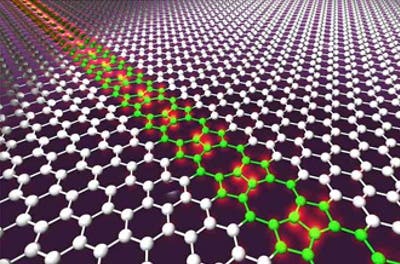University of Wisconsin-Madison engineers devised a new method that grows graphene nanoribbons directly on a germanium wafer. The ribbons are of excellent quality and the technique is compatible with current manufacturing methods. These sort of ribbons have been heralded by industry experts as the component of the future which will make electronics faster and more efficient. The only thing that’s been missing until now was a sound way to make them.
Graphene – the one atom thick carbon allotrope spaced in a hexagonal lattice – is a wonder material with fantastic electrical conductivity and heat dissipation. These properties makes it an ideal component in electronics, but graphene on its own is rather useless for semiconductor applications. For graphene to work as a semiconductor, it needs to be able to switch currents on and off. In more technical terms, previously scientists calculated that an optimal design would be a 10nm wide graphene with a well-defined edge where carbon-carbon bonds are parallel to the edge (the ‘armchair’ edge).
“What we’ve discovered is that when graphene grows on germanium, it naturally forms nanoribbons with these very smooth, armchair edges,” said research leader Michael Arnold. “The widths can be very, very narrow and the lengths of the ribbons can be very long, so all the desirable features we want in graphene nanoribbons are happening automatically with this technique.”
“Graphene nanoribbons that can be grown directly on the surface of a semiconductor like germanium are more compatible with planar processing that’s used in the semiconductor industry, and so there would be less of a barrier to integrating these really excellent materials into electronics in the future,” Arnold said in a statement.











